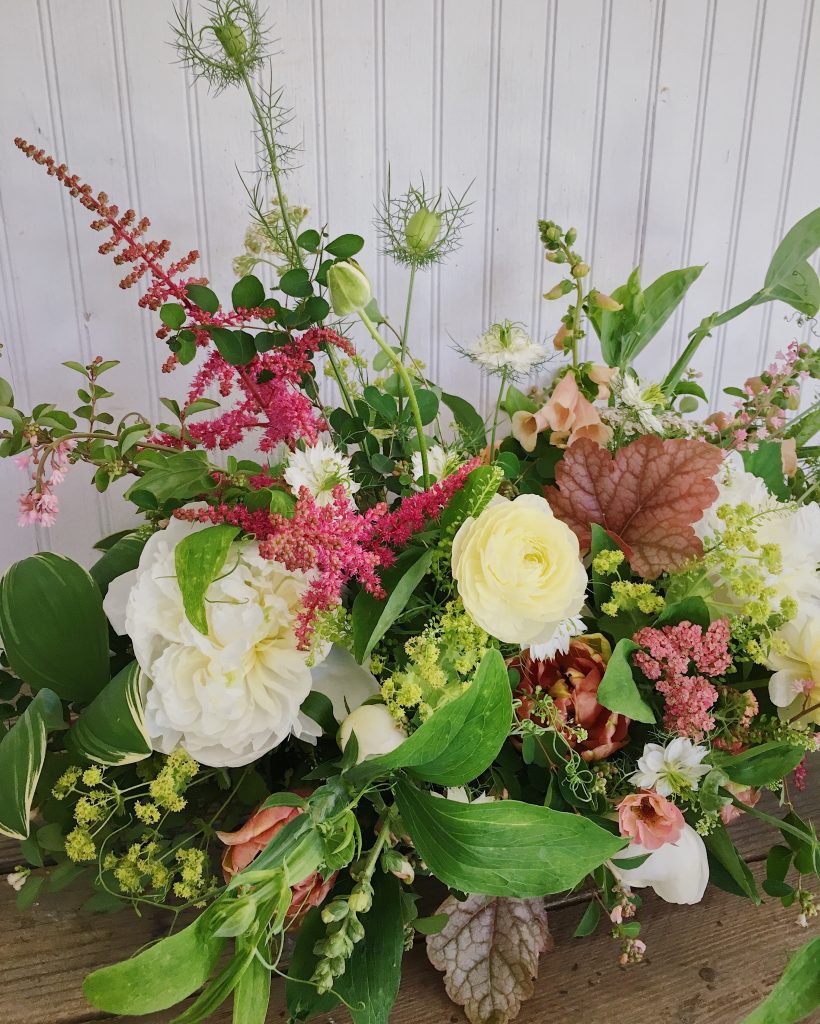
While you need plenty of sun to grow many of the better-known flowers for cutting – zinnias, lilies, sunflowers, cosmos, etc – there are several excellent cut flowers that thrive in the shade. And better yet, there are many shade plants that provide gorgeous foliage for bouquets. And since foliage is typically the backbone of any truly unique bouquet, you’ll be wanting to add some of these shade-lovers to your cutting garden this coming spring! And my favorite part about a shade cutting garden? It’s all perennial! So once you get these plants established, you’ll be cutting beautiful bouquets for years to come with very little effort.
15 Shade-Loving Plants for your Cutting Garden
Astilbe chinensis
These classic cottage garden favorites range in colors from white/cream to vivid pink/red. Astilbe flower spikes appear in late spring and early summer. Astilbe are relatively easy to grow and prefer partial shade in our hot summers here in Philadelphia. While they can thrive in deep shade, they will flower better in partial shade so put them at the edge of your woodland garden. Be sure to keep them well watered throughout the season as Astilbe hates to dry out. For the longest vase life, cut the flower spikes with the lower half has open florets but before the entire spike opens up.
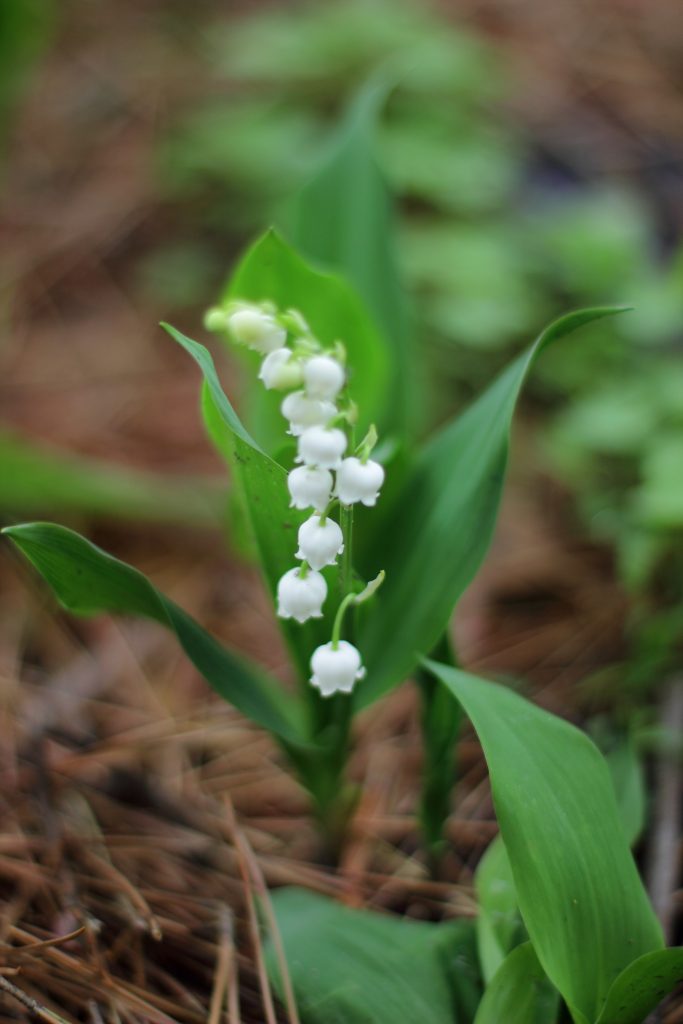
Convallaria majalis
Convallaria majalis, or more commonly known as Lily of the Valley, is a staple in many a shade garden as an indestructible ground cover. The flowers are sweetly scented and a nostalgic inspiration for many a commercial perfume. The diminutive white bells hold exceptionally well as a cut flower when picked when the lowest bell or two on the stem are fully open. These flowers are very valuable in the florist trade. Convallaria thrives in deep shade and spreads rapidly when happy.
Lilium formosanum
Formosa Lily are a recent introduction to our farm, by way of the gracious souls at 3 Porch Farm in Georgia. These statuesque late-summer bloomers thrive on neglect and apparently rather enjoy being tucked into woodland edges, multiplying as they make themselves at home. Reportedly deer do not eat them, a trait we will be testing extensively at our farm this coming summer. Formosa Lily are excellent cut as fresh flowers and also develop a striking pod in the autumn if flowers are not picked in the summer. Unlike some others in the Lilium family, Formosa Lily is very easy to grow from seed so filling your garden with these beauties is a cinch.
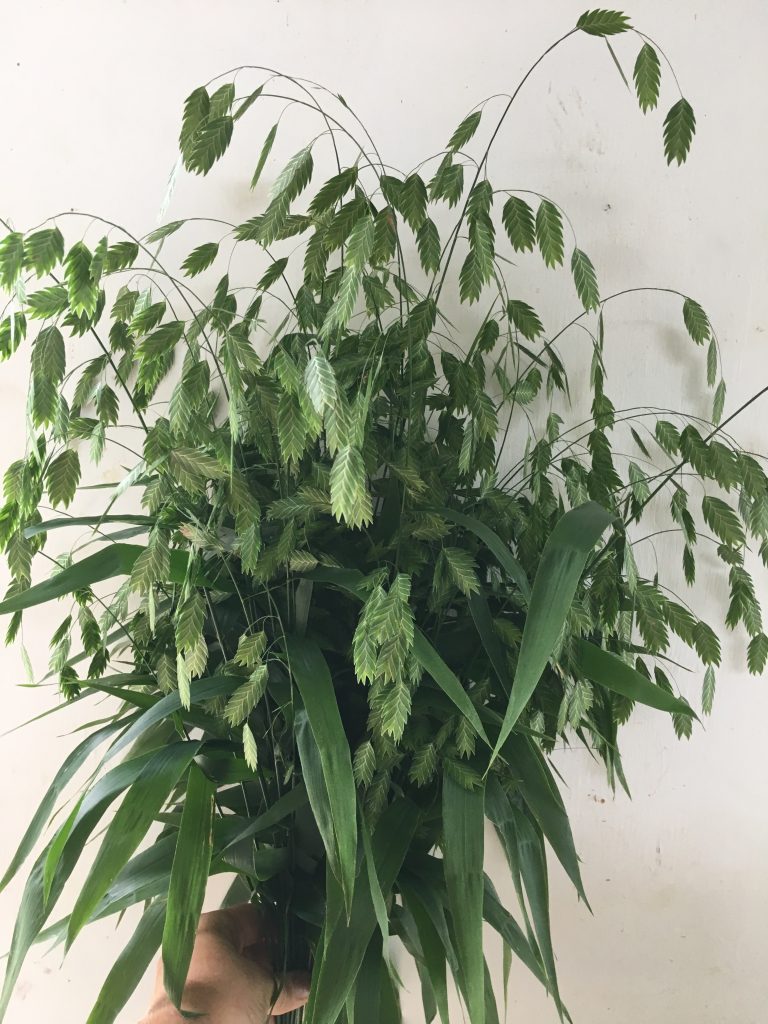
Chasmanthium latifolium
A perennial grass growing to about hip-high, Northern Sea Oats is the perfect “twinkle” for bouquets, especially in late autumn as the seed heads begin to fade to a tarnished gold. We have had a patch of Chasmanthium tucked into our tree line at the farm for several years now, a purposeful placement that keeps this typically-aggressive garden thug in check. Once established, it’s pretty tough to kill Chasmanthium, which is good when you’re a carefree shade gardener!
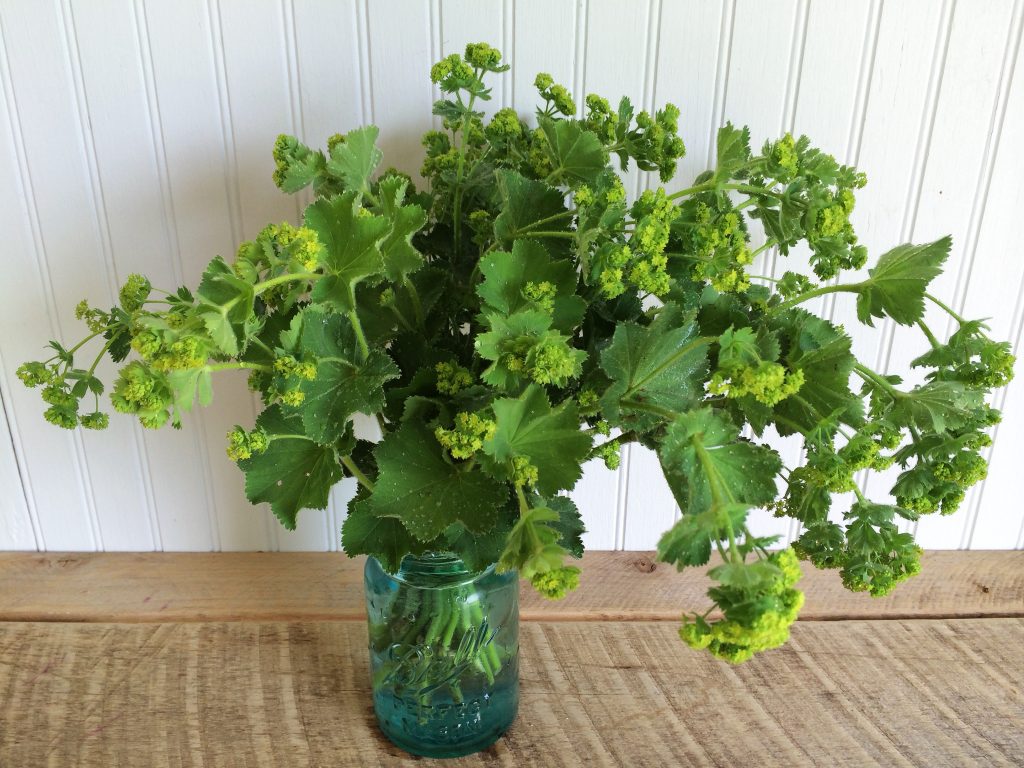
Alchemilla mollis
This sweet shade lover is commonly called Lady’s Mantle because of the way the perfectly pleated leaves shed water droplets so gracefully. While the foliage is a bit too short to use regularly in floral arrangements, the chartreuse airy cloud of blooms it sends up in early June are a favorite accent in our wedding bouquets, creating a textural contrast to the big blousey blooms of peonies. For the most abundant blooms, keep this little lady well-watered and plant in dappled shade.
Anemone tomentosa
When the rest of the farm is starting to fade in autumn, Anemone tomentosa (aptly called Autumn Anemone or Japanese Anemone) are just ramping up their whimsical floral parade. Blooms wave in the breeze on long, straight, thin stems. They add a delicate grace to arrangements and the buds are particularly interesting. They flower best at the woodland’s edge where dapple sun can hit them.
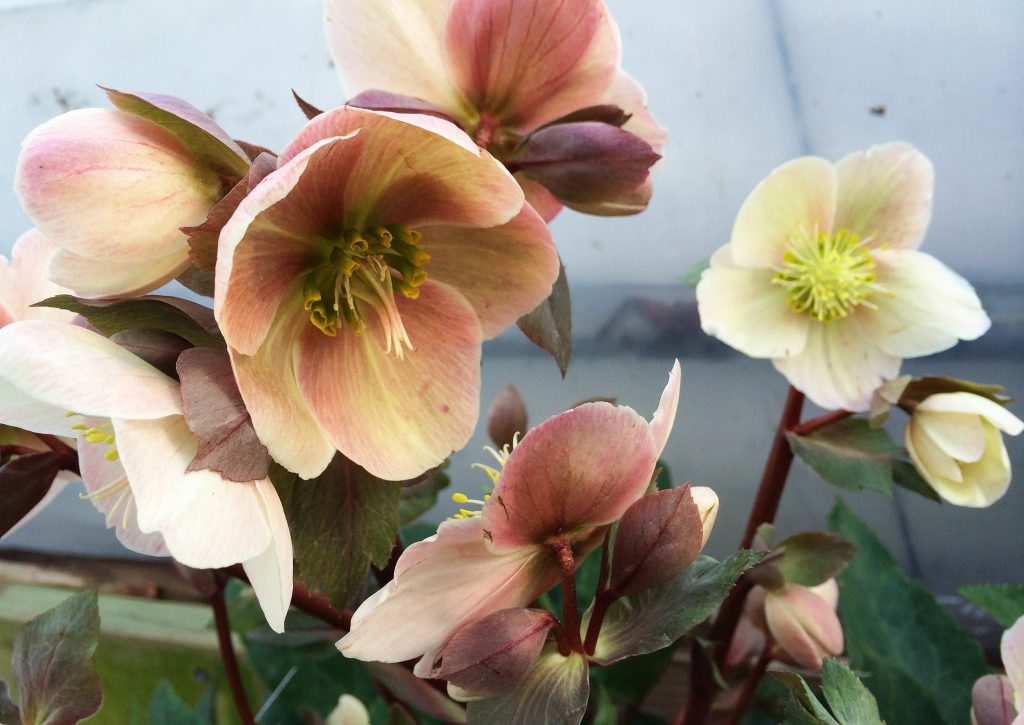
Helleborus hybrids
Almost everyone knows and loves hellebores! They are particularly deer resistant compared to most plants. They can handle just about any level of shade. Once established, they are tough as nails and will probably outlive their gardener. The blooms are a stunning treat in early spring when not much else is green. The trick to using hellebores as cut flowers is to wait until they are mature enough so they don’t wilt in the vase. Check out this past blog post on how to tell when your hellebores are ready to cut.
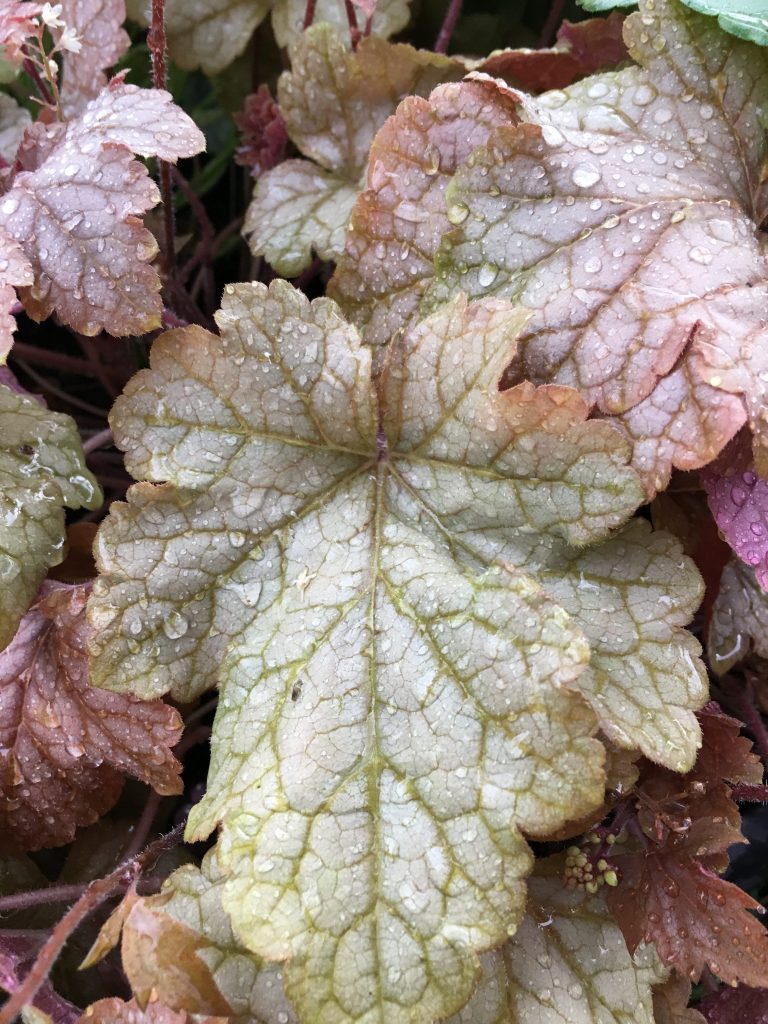
Heuchera villosa
A shorty, but a goodie. Heucheras, often called Coral Bell, love shade! And thanks to some clever breeding, they now come in a riot of colors. The foliage is such a sweet accent in a petite floral arrangement. A few varieties get large flower spikes in autumn too, most notable the variety ‘Autumn Bride’. Heucheras like deep shade and do well under trees where it’s maybe a bit too dry for some other plants to be happy.
Mertensia virginica
Commonly called Virginia Blue Bells, Mertensia is a native wildflower that loves moist shady areas. So if you’ve got a damp spot in your woods, this may be just the ticket. This sweet blue bloom isn’t super long lasting in the vase, but if you pick it when the first bell or two are just open, the rest will bloom in the vase. Mertensia is an ephemeral, so don’t be alarmed if the plants appear to disappear in the heat of summer. They’ll come back next spring and likely spread.
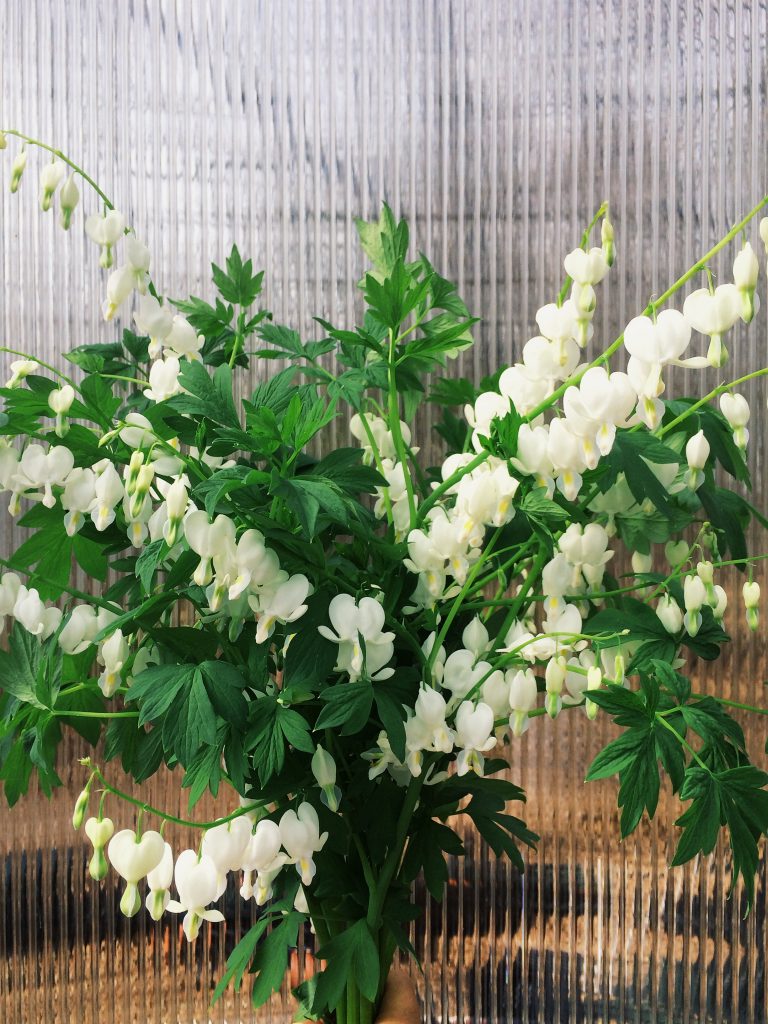
Dicentra spectabilis
A romantic old-fashioned favorite of the classic cottage garden, Bleeding Hearts love shade and throw up dozens of graceful arching stems of blooms per plant when happy. They can thrive in deep shade but will flower more prolifically in dappled shade. Plants are very sturdy, despite the delicate look of the heart-shaped pendulous flowers. Cut stems for bouquets when two or three “hearts” are fully developed on a stem. Dicentra is also an ephemeral and plants will go dormant in the summer.
Astrantia major
Astrantia, or masterwort, as a delightful star-shaped petite flower that will elevate any floral arrangement. This little beauty does not love summer heat though so if you live in the south (zone 8 or hotter) it’s not the one for you. Otherwise, this perennial is relatively easy to grow and will re-bloom throughout the season if you continue to cut from it. If it’s happy, Astrantia will form colonies, providing you with an abundance of blooms.

Aquilegias candensis
This exotic looking flower is actually native. There is also a species, Aquilegias vulgaris, that is native to Europe. Commonly called Wild Columbine, this shade-lover is typically a short-lived perennial (possibly even an biennial), but it will re-seed freely so once it is established, you’ll likely have it for many years. The nodding “hats” (blooms) can be a little tricky to work into bouquets, but they do add just the right touch. An excellent variety for cutting is the ‘Barlow’ series.
Hydrangea macrophylla
Everyone knows and loves the big, mop-head hydrangeas. And for good reason! These big blooms come in array of colors now and provide the “umph” needed to create a larger size bouquet. Most readers will already be familiar with hydrangeas. Two important tricks to know though for good blooms: 1) if you’d like to prune your shrub, do it immediately after it flushes out blooms in the summer. If you wait to prune it in the spring, you’ll have no blooms that year. 2) Do not be tempted to pick the blooms right after they open. Hydrangeas will wilt if picked too early. Instead, wait until the blooms “firm up” in late summer before snipping them to use in bouquets. The individual florets should be springy to the touch.
Polygonatum odoratum
Last, but definitely not least, is Solomon’s Seal. Happy in deep shade or partial shade equally, its graceful arching stems are a pleasure to see in the garden and in the vase. The variegated variety is especially alluring in late spring arrangements. This plant is grown for its foliage and will immediately impart a sense of sophistication to your bouquet. When it is happily situated, it will spread via rhizomes and you’ll be able to cut abundant armfuls of foliage for several months each season.
For more tips on growing great flowers for cutting in your garden, check out this previous post and this previous post.

Wonderful!!!! Thanks you for sharing!
Great to know! I have part shade behind my garden shed and wanted to grow some cutting flowers there!
Hi Jennie! I’m curious as to how the deer responded to the formosa lilies?
Good question! All of mine are currently protected by deer fencing so there’s been no deer pressure. However, I do have a new batch of seedlings growing that I plan to plant out along the edges of my property where they won’t be protected by any fencing. I’ll try to remember to report back in a year. 🙂
I’d love to know how these did with the deer as well! Thanks for the article Jennie!
Most of my growing space is fenced with professional deer fencing so I can’t really speak to deer resistance from personal experience, but many of these are listed as deer resistant in various reference materials.
Love these and have most everyone! That’s 14, what’s the 15th???
Oh my goodness, I didn’t realize I had miscounted! Hahah! Thanks for picking up on that! I’ll go back and make the official edits later, but the 15th was supposed to be Athyrium niponicum. 🙂
Do you grow from seed? Transplant? Do you harvest any for seeds? Who are your sources for seeds? I’m doing a cutting garden through out my backyard landscape and shade comprises a lot of it. Do you use stakes and/or netting? This has become my passion and I want to learn as much as I can!
We buy small transplants for most of our perennials. Check your local garden centers… most good independent garden centers will carry all of these plants listed. We do not stake or net anything on this list.
Do you know anywhere I can get common violets? There are so many lawn services I can’t find them wild anymore